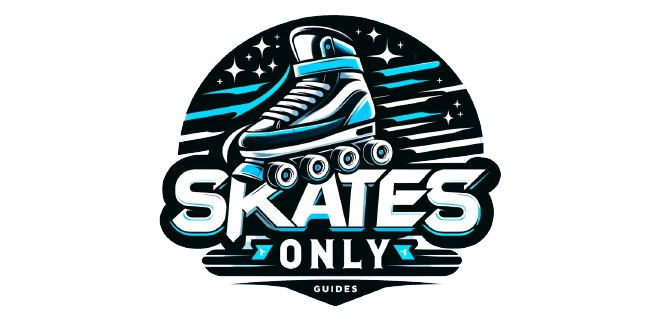Rollerblading backwards is not just a cool trick; it’s a useful skill that can enhance your overall skating experience, improve your balance, and open the door to more advanced maneuvers.
While it might seem daunting at first, with the right techniques and plenty of practice, you can learn how to rollerblade backwards.
This comprehensive guide will walk you through the steps of mastering backward rollerblading — from the basics to more advanced techniques.
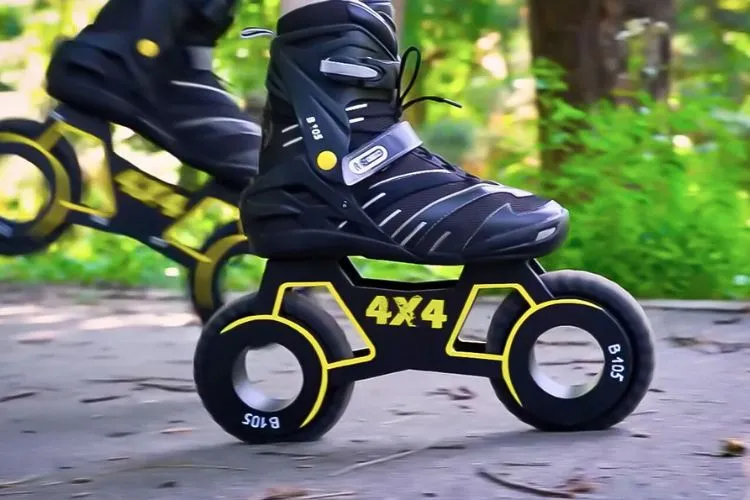
Preparing to Rollerblade Backwards
Before attempting to rollerblade backwards, it’s essential to make sure you have the proper gear. A well-fitted helmet, knee pads, elbow pads, and wrist guards are crucial to protect you from falls.
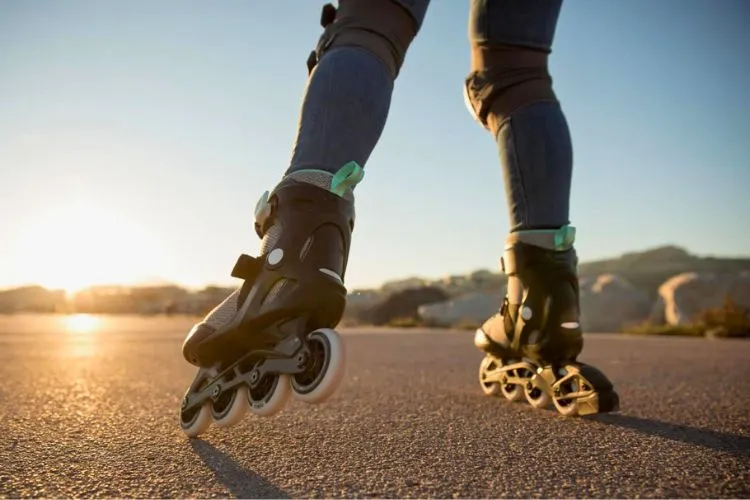
Your rollerblades should fit comfortably and provide adequate ankle support. Once you’ve got your gear sorted out, ensure you’re comfortable with fundamental rollerblading skills. Being able to stop, turn, and move forward with ease is necessary before you start moving in the opposite direction.
Understanding the Basics
The foundation of skating backwards lies in balance and posture. Stand with your knees slightly bent and your torso leaning forward. This stance will keep your center of gravity stable.
When it comes to posture, imagine a string pulling your head up towards the sky — this visualization will help you maintain an upright position, preventing unnecessary strain on your back.
How to Rollerblade Backwards?
The Lemon Technique is an excellent starting point for beginners. By pushing your heels outward and then pulling them back in — essentially drawing lemon shapes on the ground with your wheels — you gain the fundamental motion needed for backward movement. Mastery of this in-and-out movement builds the foundation for more complex techniques.
Transitioning from the Lemon Technique, the Heel-to-Toe Shift involves a subtle weight shift from your heels to your toes. This action propels you backward and helps build momentum. The elegance of rollerblading backwards often lies in this simple weight transition.
You may also like: Types of Rollerblades: A Complete Guide | Rollerblades vs Roller Skates: Mastering the Wheels
Advanced Techniques
Once you’re comfortable with the basics, it’s time to tackle more advanced maneuvers like crossovers, which involve crossing one foot over the other to turn or gain speed while skating backwards.
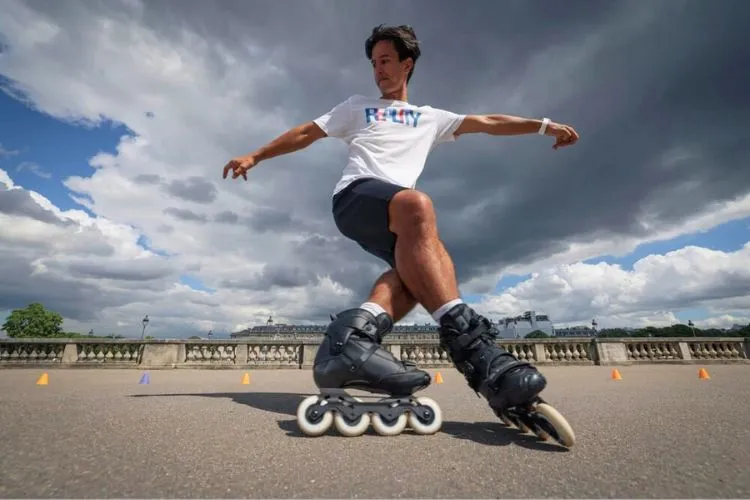
Crossovers add fluidity to your backward skating and are essential for making smooth, sharp turns. For speed control, mastering the art of lightly dragging one toe stop on the ground can help you regulate your backward motion, allowing for quick stops and velocity adjustments.
Practice Drills
Practice makes perfect, and this is especially true with backward swizzles. This drill strengthens your backward stride by reinforcing the heel-to-toe action.
Cone drills increase your agility and control: by setting up cones and weaving through them backwards, you’ll develop precision and the ability to navigate complex paths while skating in reverse.
Common Challenges and Solutions
Balance issues are among the most common challenges faced when learning to rollerblade backwards. To improve balance, regularly practice stance and posture even when not on skates.
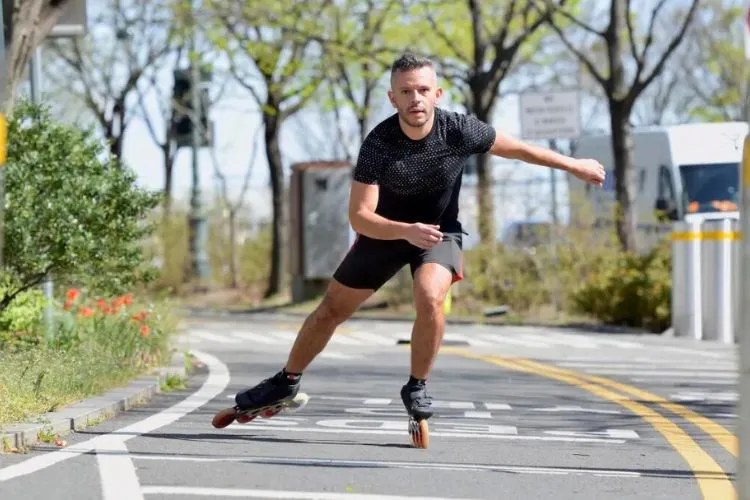
Being consistent with these exercises will significantly enhance your stability on wheels. Directional control can be frustrating at first.
To maintain your desired path, focus on making small adjustments with your feet, using slight leans to guide your direction rather than drastic movements.
Safety Precautions
Understanding how to fall safely can prevent serious injury. Practicing controlled falls on a soft surface can help. Learn to bend your knees and roll onto a fleshy part of your body to absorb the impact. Always stay aware of your surroundings to avoid collisions, particularly when skating in public areas.
Warm-Up and Stretching Routines
Before you strap on your rollerblades and hit the pavement, laying the groundwork with a solid warm-up and stretching routine is crucial.
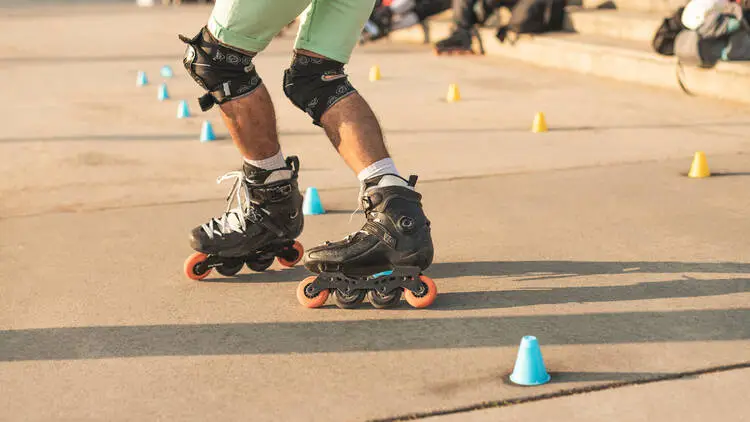
Warming up prepares your body for the physical demands of rollerblading, ensuring your muscles are limber and more flexible, which is especially important when performing backward maneuvers that require a different set of movements compared to forward skating.
Begin with 5-10 minutes of light cardio, such as jogging or jumping jacks, to increase your heart rate and blood flow to the muscles. Follow this with dynamic stretches focusing on the legs, hips, and lower back — areas heavily utilized in rollerblading.
Leg swings, hip circles, and gentle lunges not only reduce the risk of injury but also enhance your agility and performance on skates. This pre-skate preparation ensures your body is fully tuned and ready to tackle the challenges of skating backwards with confidence and ease.
Specific Muscle Strengthening
To excel in backward rollerblading, honing the strength of specific muscle groups is vital. Concentrate on exercises that target your legs, core, and lower back, the powerhouse trio for maintaining balance and control.

Squats and lunges fortify your quadriceps, hamstrings, and glutes, directly translating to stronger strides and steadier stances. Planks and leg raises strengthen the core, enhancing your ability to maintain posture and stability while moving.
Lastly, exercises like supermans and bridges target the lower back, increasing endurance and reducing the risk of injury. Incorporating these exercises into your routine 2-3 times a week will build the muscular foundation essential for proficient backward skating.
Pro Tips
Professional skaters often emphasize the importance of relaxation. Tense muscles can lead to a choppy skating experience. Stay loose and allow your body’s movements to flow naturally. A relaxed posture and smooth motions will make your skating look more effortless and graceful.
Frequently Asked Questions (FAQs)
What’s the easiest way to start rollerblading backwards?
Start with the Lemon Technique on a flat surface in a controlled environment. This foundational method lays the groundwork for more complex back-skating skills.
How can I prevent falling while learning to rollerblade backwards?
Always wear proper safety gear, practice correct posture, and proceed with exercises that gradually build your skills, like backward swizzles and cone drills, to develop better balance and control.
How long does it typically take to learn to rollerblade backwards?
The learning curve varies for everyone, but with consistent practice, you can expect to see improvement within a few weeks. Mastery takes longer, so remain patient and persistent.
Overcoming Psychological Barriers
Learning to rollerblade backwards can often involve overcoming psychological barriers. Fear of falling or losing control is common and can hinder progress. Here are some strategies to build confidence and reduce anxiety:
Gradual Exposure: Start practicing in a familiar and safe environment, such as a flat and empty parking lot or a quiet park path. Gradually increase the complexity of the environment as you become more comfortable.
Visualization Techniques: Before attempting backward movements, visualize yourself successfully skating backwards. Imagine the feeling of balance and control. Visualization can help reinforce positive outcomes and reduce fear.
Positive Self-Talk: Encourage yourself with positive affirmations. Remind yourself of your progress and capabilities. Statements like “I can do this” or “I’m improving every day” can boost confidence.
Buddy System: Practice with a friend or a coach. Having someone to offer guidance, support, and feedback can make the learning process more enjoyable and less intimidating.
Small Steps: Break down the learning process into smaller, manageable steps. Celebrate small victories, such as maintaining balance for a few seconds or successfully completing a backward swizzle. These achievements will build confidence over time.
Enhancing Balance and Coordination
Improving balance and coordination is key to mastering backward rollerblading. Here are some exercises to help:
Single-Leg Stands: Practice standing on one leg for 30 seconds to a minute. This exercise strengthens the stabilizing muscles in your legs and improves overall balance.
Balance Board Training: Using a balance board or wobble board can simulate the instability of rollerblading and enhance your balance. Perform exercises such as squats or leg lifts while balancing on the board.
Core Exercises: A strong core is essential for maintaining stability. Incorporate core exercises like planks, Russian twists, and bicycle crunches into your workout routine to improve core strength and stability.
Dynamic Movements: Engage in dynamic movements that challenge your balance, such as yoga or tai chi. These practices improve body awareness and control, translating to better performance on skates.
Exploring Advanced Backward Maneuvers
Once you’ve mastered basic backward rollerblading, you can explore advanced maneuvers to further enhance your skills:
Backward Crossovers: Similar to forward crossovers, this maneuver involves crossing one foot over the other while skating backwards. It allows for smooth turns and improved agility. Practice this technique on a flat surface before attempting it on slopes or uneven terrain.
Backward Stops: Learning to stop effectively while skating backwards is crucial for safety. The T-stop is a common backward stopping method. Drag one skate perpendicular to the direction of movement to create friction and slow down gradually.
Backward Jumps and Spins: Advanced skaters can incorporate jumps and spins into their backward rollerblading routine. Start with small hops and gradually progress to more complex jumps and spins as your confidence and skill level increase.
Backward Transitions: Mastering transitions between forward and backward skating is a valuable skill. Practice smoothly shifting from forward to backward skating and vice versa. This technique is particularly useful for navigating crowded areas or changing directions quickly.
Conclusion
Rollerblading backwards is a thrilling skill that adds a new dimension to your skating. By preparing with the right gear, understanding the basic posture and movement, practicing essential drills, and staying safe, you’ll make steady progress.
Remember to move at a comfortable pace, stay safe with the right protective gear, and most importantly, have fun with it. With time and patience, you’ll be gliding backwards effortlessly, ready to tackle the next skating challenge.
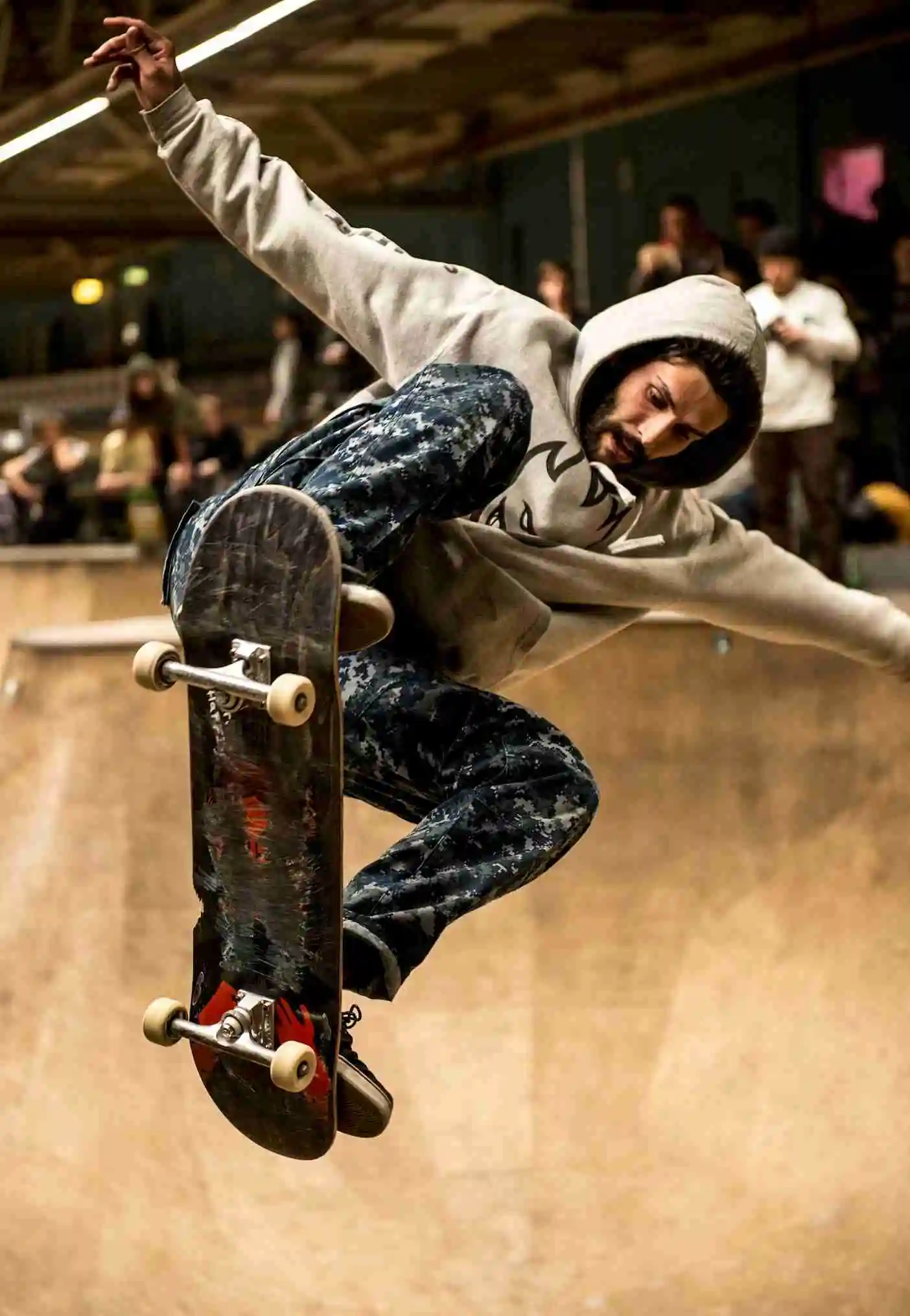
Matthew James is a passionate skater who wanted to create a platform to share his love for skating with others. With a vision to create a vibrant community of skaters, he aims to provide a space where skaters of all levels can connect, learn, and grow together.
